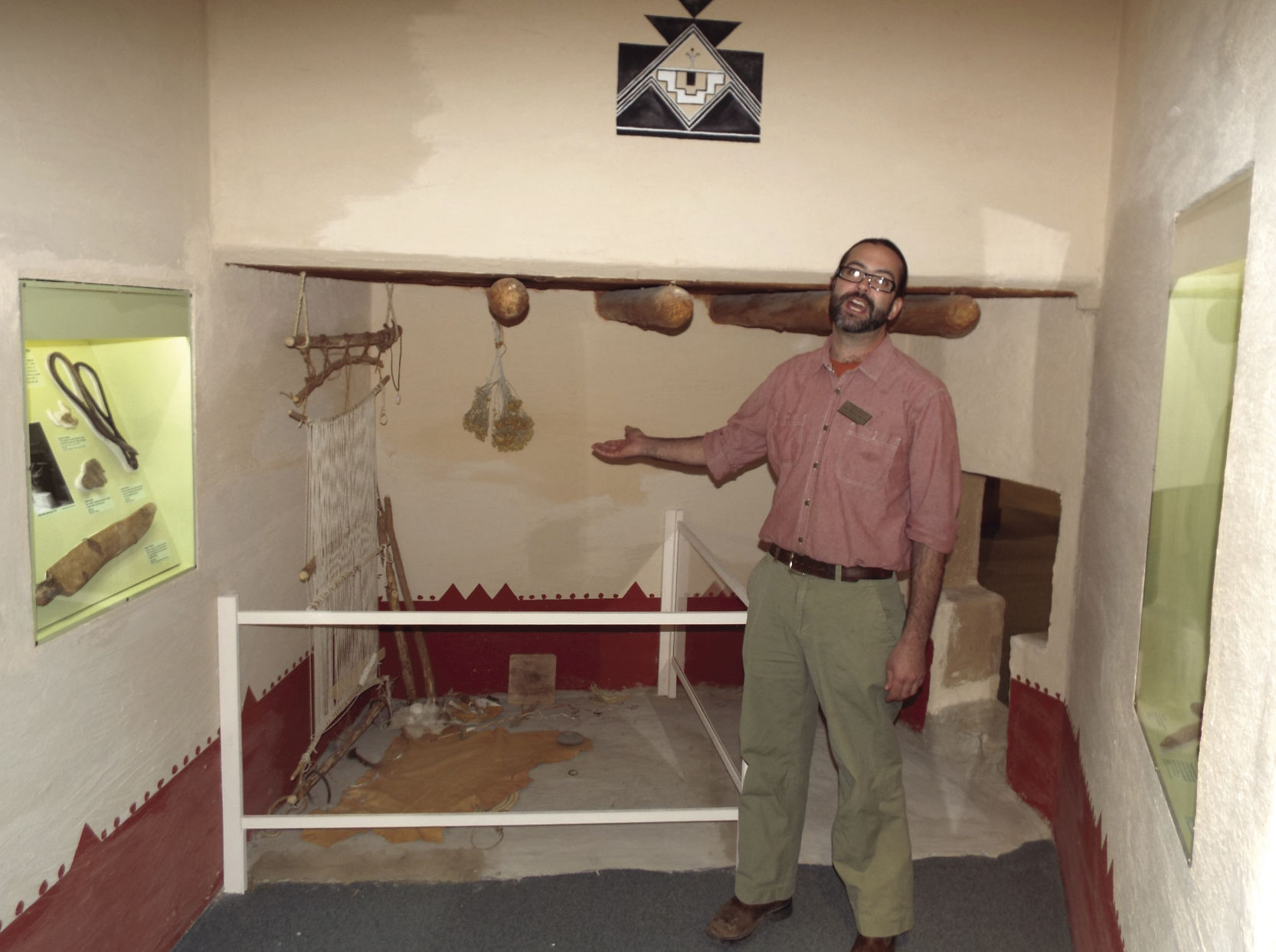When the first Europeans arrived in the southwest beginning in the 16th century, peoples descended from the Anasazi were living in complex, apartment-like multistory villages. The Spanish called these “pueblos,” meaning towns, and applied the name to all the peoples living in such complexes.
USU Eastern Prehistoric Museum unveiled a new exhibit which depicts part of a pueblo on Saturday. Museum Director Dr. Kenneth Carpenter, who welcomed the group of museum patrons, called the exhibit, “The most ambitious, most expensive single exhibit that this museum has done.”
The exhibit is a reconstruction of part of a pueblo similar to Five Kiva Pueblo near Blanding Utah. It is typical of housing for the group of people known as the Ancestral Puebloans.
Curator of Archaeology Dr. Tim Riley said the museum’s mission is the prehistory of all of Eastern Utah. He said the focus has been on the Fremont people who live closer to home here in Carbon and Emery Counties. “This is the first real exhibit in this museum focused on the Ancestral Puebloans. I think everyone is going to be pleased and we’re excited to share it with you.”
Prehistoric Museum unveils new archaeology exhibit

Prehistoric Museum Archaeology Curator Tim Riley explains the exhibit’s interior setting. Rick Sherman, Sun Advocate Reporter
